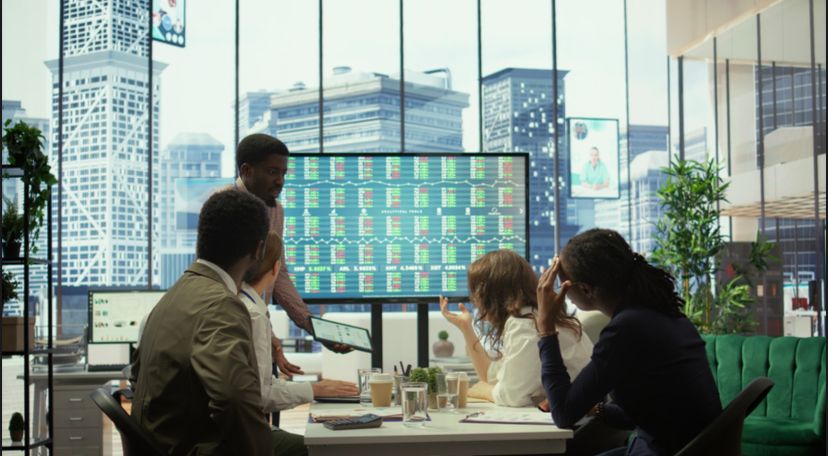UAE Developers Target $110 Trillion US Real Estate Market

Real estate developers from the United Arab Emirates are preparing to enter one of the world’s largest and most dynamic real estate markets—the United States. The US real estate sector is forecast to reach a value of $110.83 trillion by 2025, primarily driven by residential property. As domestic real estate in the UAE continues to flourish, with total transactions reaching AED 893 billion across Dubai, Abu Dhabi, Sharjah, and Ajman in 2023, UAE developers are now turning their attention to high-value international markets.
The decision to explore real estate opportunities abroad marks a significant milestone for UAE companies seeking to diversify and globalize their investment portfolios. The US, known for its transparent regulatory framework, robust property laws, and consistent appreciation in housing prices, presents an ideal destination for expansion. It’s a strategic leap, aligned with the growing sophistication and global ambition of UAE-based firms.
UAE–US Economic Ties Pave Way for Investment Confidence
The strong trade relationship between the UAE and the US provides an essential foundation for this new wave of investment in real estate. In 2023, the UAE imported over $24.8 billion worth of goods from the United States—a 19 percent increase from the previous year. This growth cements the UAE’s position as the largest export destination for US goods in the Middle East. The economic relationship supports over 166,000 American jobs and spans all 50 US states.
This robust bilateral engagement is not limited to goods and services. It is now extending into long-term capital investment. UAE investors, already active in global real estate markets such as London and Singapore, are recognizing the US as a stable, secure, and rewarding destination for high-value real estate ventures. On the other hand, US-based investors and residents are increasingly showing interest in UAE real estate due to its strong yields, attractive pricing, capital gains, and incentives such as full foreign ownership in designated zones.
Strategic Investment Partnerships Reflect UAE Ambitions
One of the most prominent examples of UAE engagement with the US real estate market is the partnership between Abu Dhabi’s Mubadala Investment Company and 3650 REIT, a US-based commercial real estate lender. The collaboration, backed by the California State Teachers’ Retirement System (CalSTRS), involves a commitment of up to $4 billion. Although exact figures were not disclosed, the investment aims to bolster real estate credit markets across the US.
This move aligns with Mubadala’s strategy of expanding its investment footprint globally while prioritizing stable and long-term asset classes. Through this partnership, the UAE is not only injecting capital into US real estate but also participating in financial innovation, debt structuring, and credit markets. It is a sign of how sovereign wealth funds are evolving beyond traditional investments to support strategic sectors such as infrastructure, technology, and sustainable development.
UAE Developers Diversify Into Residential and Data-Driven US Assets
Several leading UAE developers have already set their sights on specific opportunities within the United States. The Damac Group, known for its iconic towers and luxury real estate in Dubai, is now pursuing data center investments in the US. With the surge in AI technologies, digital transformation, and demand for high-performance computing infrastructure, data centers have become a lucrative real estate asset class.
Sobha Realty, another renowned developer, is exploring entry into the US residential market by leveraging its expertise in luxury living and integrated communities. MAG Group, Mulk Holding, Dar Global, and Invest Group Overseas (IGO) are also looking to deploy their resources in building high-end residential and mixed-use developments, particularly in states experiencing population growth and urban revitalization.
These investments demonstrate a shift in the role of UAE developers, who are moving from regional to global players. Their goal is not only to diversify revenue streams but also to build brand recognition in highly competitive markets while accessing long-term, dollar-denominated returns.
Unpacking the US Real Estate Landscape and Its Global Appeal
The United States continues to be one of the world’s most attractive real estate markets, thanks to its scale, diversity, and transparency. The housing stock in the US reached a value of $50 trillion in 2024, with expectations that it will surpass $110 trillion by the end of 2025. Residential real estate continues to dominate the sector, although commercial and industrial properties are gaining prominence, especially with the rise of e-commerce, warehousing, and logistics.
According to the National Association of Realtors (NAR), international buyers purchased over 54,000 residential properties in the US between April 2023 and March 2024, with total sales reaching $42 billion. Of this, $22.6 billion was attributed to non-resident foreign nationals already living in the United States, while $19.4 billion came from overseas investors. These numbers underscore the global demand for US real estate and the willingness of foreign investors to commit capital to American properties in search of safety, income, and appreciation.
Key Investment Locations Drawing UAE Interest
Florida has emerged as the leading destination for international real estate investors in the US, accounting for nearly 20 percent of all foreign real estate purchases. The state’s business-friendly tax environment, desirable climate, and sustained migration trends make it particularly attractive. Texas follows closely, capturing 13 percent of international real estate investments, while California, despite its regulatory complexities, accounts for 11 percent.
Miami-Dade County, often referred to as the gateway to the Americas, saw a 43 percent increase in residential property inventory in April 2024 compared to the same period the year before. This supply growth is complemented by resilient demand, fueled by domestic migration, international capital, and continued investment in infrastructure and transport. These are conditions similar to Dubai’s property success, and they offer a familiar yet profitable landscape for UAE developers.
APEX 2025 to Accelerate Real Estate Collaboration
To further enhance cross-border investment and promote bilateral real estate initiatives, the America Property Exhibition, Summit and Gala Awards (APEX 2025) will be held from September 15 to 17 at the Miami Convention Centre. Organized by MIE Events and supported by the Dubai Land Department, the summit aims to bring together over 100 international developers, more than 3,000 real estate professionals, and around 150 high-profile speakers and thought leaders.
The summit will serve as a unique platform for showcasing UAE real estate capabilities while exploring US market opportunities. It is expected to foster partnerships in technology-driven development, sustainable architecture, smart city planning, and green financing. Beyond business-to-business interaction, the event is positioned to attract institutional investors and high-net-worth individuals interested in cross-border real estate portfolios.
UAE Plans $1.4 Trillion Investment in the US Over the Next Decade
The real estate push is only one part of a broader commitment by the UAE to strengthen economic ties with the United States. Over the next ten years, the UAE plans to invest up to $1.4 trillion in American industries. This includes critical sectors such as artificial intelligence, clean energy, semiconductors, manufacturing, affordable housing, and physical infrastructure.
This strategic economic engagement is backed by a Comprehensive Strategic Partnership Agreement signed between the UAE and the US, which aims to deepen trade, investment, and innovation. As part of this vision, real estate is seen as both a standalone investment avenue and a foundation for broader urban development and infrastructure growth.
Real Estate as a Driver of Diplomatic and Economic Integration
What distinguishes this new phase of investment is that it is not just capital-driven—it is relationship-driven. Real estate is increasingly becoming a medium for economic diplomacy, bringing nations together through shared investment, urban planning, and development expertise. For UAE developers, entering the US market is more than an economic strategy; it is a statement of international collaboration, confidence, and ambition.
The timing also coincides with a shift in global investment trends. As inflationary pressures ease and interest rates stabilize, institutional investors are once again turning to real estate as a stable and inflation-resistant asset class. In this context, UAE developers are not just participating in the global real estate market—they are helping shape its future.
UAE–US Real Estate Ties Enter a Transformative Phase
The UAE’s expansion into the US real estate market reflects a clear and calculated long-term strategy, grounded in strong economic fundamentals, international trade relations, and mutual trust. With major players like Mubadala, Damac, and Sobha Realty entering the scene, and global events like APEX 2025 encouraging cross-border collaboration, the foundation has been laid for a transformative era in property development and investment.
As the world becomes more interconnected, and as cities compete to be smarter, greener, and more inclusive, the fusion of Emirati vision and American opportunity is poised to deliver significant value—not just to investors, but to communities across both nations.







